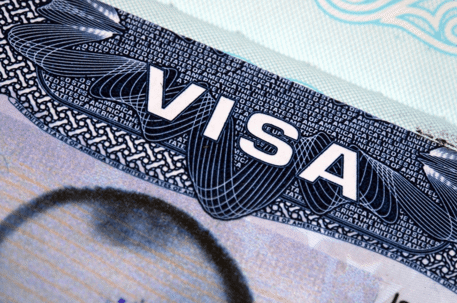The Visa Bulletin is a monthly online publication published by the U.S. State Department. See here. The Visa Bulletin provides a monthly update on those waiting to be eligible for "green cards" based on family relationship and/or employment. By statute, there are only a certain number of citizenship visas that can be granted each year. Prior to 2021, there were about 365,000 green cards authorized each year. The number is now about 472,000 and may be higher for 2022. The total number of green cards available is broken down into two broad categories — family-related and employment-related green cards. So, for 2021, about 262,000 employment green cards and about 210,000 family-related green cards were authorized. But each broad category is broken down into several subcategories. Each subcategory also has an annual limit. So, for example, in recent years, there have been about 23,000 green card visas available for unmarried sons and daughters of U.S. citizens.
Because of the strict limits on the categories -- quotas -- many people seeking green card visas are placed on a waiting list. Some remain on the waiting list for years. Where a person is located on the waiting list is called a person's "Priority Date." The Visa Bulletin provides a monthly update on the waiting list for each category based on priority dates.
How to Read the Visa Bulletin
Like many government publications, the Visa Bulletin is not easy to read. But with some practice and experience, you will be able to gather the information you need as you watch your progress on the various waiting lists. Let's take an example from the September 2021 Visa Bulletin and the one from May 2021.
The first thing to do is skip to the charts. That is where the information is contained. The second thing to do is to figure out which category is relevant to your application. So, looking at the September 2021 Visa Bulletin, let's look at the first chart. This chart is called "Final Action Dates for Family-Sponsored Preference Cases." If you look down the first column of the chart, there are codes for the various categories that relate to family-sponsored cases. Above the chart are the definitions for the codes. For example, "F-1" is the code for "Unmarried Sons and Daughters of U.S. Citizens" while "F-4" is the code for "Brothers and Sisters of Adult U.S. Citizens." So, the first task is to identify the code that relates to your case.
Once you know your code, you can read the table from left to right to locate dates. But, you must also look across the top of the table and see if any of the country codes apply. The first column is for any country in the world except for the other columns: China, India, Mexico and the Philippines. So, let's assume that you, a U.S. citizen, are seeking a green card for an unmarried son or daughter who lives in France. Since France is not one of the countries listed, you will be looking at the first row and the first column. There is a date in the box that intersects the column and row: "01Dec14." That is December 1, 2014. What that means is that the immigration officials are READY to issue green card visas for applications that were filed on or BEFORE December 1, 2014. Indeed, the green cards may already have been issued.
Now, let's look at the May 2021 Visa Bulletin. Looking at the same table with the same code (F-1) and in the same row and column, we see the date "22Oct14". This means that, from May to September 2021, the issuance of green cards for that category advanced from October 22, 2014 to December 1, 2014.
What About the Other Chart?
For each broad category, note that there are two tables. We have been looking at the first table for "Family-Sponsored Preference Cases." Note that table is called "Final Actions." In simple terms, a “final action” is the immigrations service’s final action which means issuance of the green card.
The second table is called "Dates for Filing Family-Sponsored Preference Cases." This is the important table for you. If we look at the September 2021 Visa Bulletin and look at the same upper left-hand box, we see the date: "15May16" (May 15, 2016). When the date in that box reaches today's date, then you must "spring into action" and begin filing paperwork to complete your visa application. As the Visa Bulletin states:
"Applicants for immigrant visas who have a priority date earlier than the application date in the chart below may assemble and submit required documents to the Department of State’s National Visa Center, following receipt of notification from the National Visa Center containing detailed instructions."
Contact Yekrangi & Associates Today
For more information, contact the Orange County Immigration Attorneys at Yekrangi & Associates today. You are not alone and we will fight for you. Yekrangi & Associates works to meet a higher standard. Our first goal is your satisfaction. Contact us at (949) 478-4963 to schedule a consultation or complete our convenient “Get Your Consultation” form here. We are located in Irvine, California.

